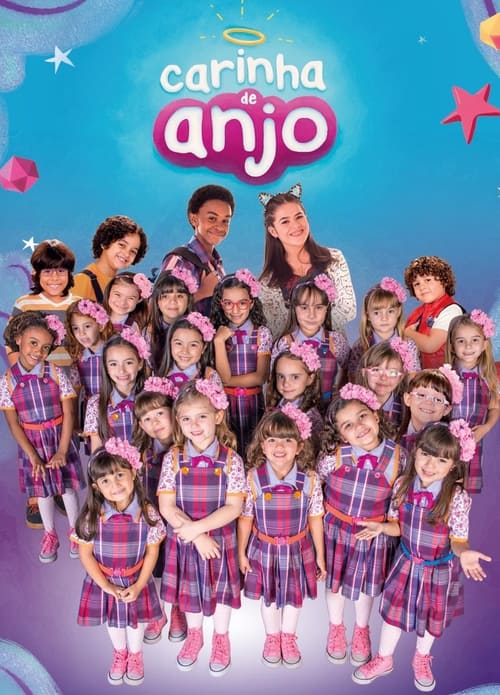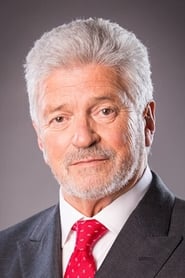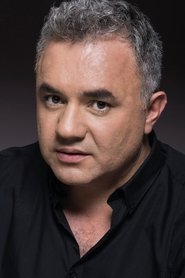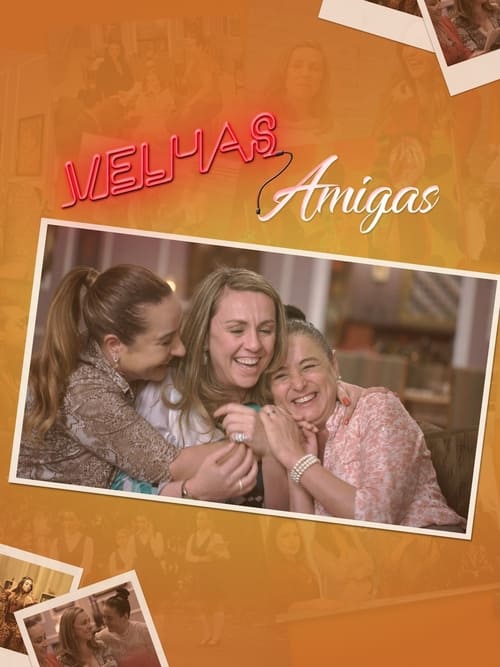
Ask Your Own Question
What is the plot?
In "Episode 3" of "A Família Ventura," the episode opens with the Ventura family gathered around the breakfast table. The atmosphere is tense as they discuss the upcoming family reunion, which is being organized by the matriarch, Dona Lúcia. She is excited but also anxious about the preparations, wanting everything to be perfect. Her husband, Seu Jorge, is more laid-back, joking about the chaos that usually ensues during family gatherings. Their children, Ana and Pedro, express mixed feelings about attending, with Ana particularly dreading the prospect of seeing her overbearing relatives.
As the day progresses, Dona Lúcia decides to take charge of the preparations, assigning tasks to each family member. Ana is tasked with creating a family tree to display at the reunion, while Pedro is responsible for bringing drinks. Tensions rise when Ana discovers that some family members have not been invited, leading to a heated argument with her mother about inclusivity and family dynamics. Ana feels that her mother is being too traditional and not considering the feelings of those who have been left out.
Later, the family visits the local market to gather supplies for the reunion. During this outing, they encounter a distant relative, Tia Marlene, who is known for her dramatic personality. Tia Marlene insists on helping with the preparations, much to Ana's dismay. She feels that Tia Marlene's presence will only complicate matters further. Seu Jorge tries to mediate the situation, suggesting that they could use the extra help, but Ana remains unconvinced.
Back at home, the family begins to prepare for the reunion. Dona Lúcia is in the kitchen, cooking traditional dishes, while Pedro sets up the outdoor area. Tensions flare again when Ana confronts her mother about the family tree project, expressing her frustration over the lack of communication within the family. Dona Lúcia, feeling overwhelmed, snaps at Ana, leading to a moment of silence filled with unspoken emotions. Ana storms off to her room, feeling misunderstood and isolated.
As the reunion day arrives, the family is bustling with activity. Dona Lúcia is in a frenzy, ensuring everything is perfect. The first guests arrive, and the atmosphere is filled with laughter and chatter. However, the mood shifts when a family feud erupts between two cousins over a long-standing rivalry. The argument escalates, drawing in other family members and creating a chaotic scene. Dona Lúcia tries to intervene, but her efforts only seem to exacerbate the situation.
In the midst of the chaos, Ana decides to take a stand. She steps in front of the arguing relatives and calls for calm, urging everyone to remember the importance of family. Her heartfelt plea resonates with some, and slowly, the tension begins to dissipate. This moment of bravery earns her the respect of her family, and Dona Lúcia looks on with pride, realizing that her daughter has grown.
As the episode concludes, the family gathers for a group photo, symbolizing their unity despite the earlier conflicts. Dona Lúcia reflects on the day's events, feeling a mix of relief and joy. The episode ends with a sense of hope for the future, as the Ventura family learns to navigate their complexities together.
What is the ending?
In the ending of "A Família Ventura," season 1, episode 3, the family comes together to resolve their differences after a series of misunderstandings. They realize the importance of communication and support, leading to a heartfelt reconciliation. The episode concludes with a family gathering, where they share laughter and reaffirm their bonds.
As the episode unfolds towards its conclusion, the tension that has been building throughout the story reaches a peak. The scene opens in the living room of the Ventura household, where the atmosphere is thick with unspoken words and lingering resentment. Each family member is engaged in their own activities, but the silence is palpable.
The eldest son, Miguel, is sitting on the couch, scrolling through his phone, visibly frustrated. He feels misunderstood by his parents, who seem to be oblivious to his struggles. Meanwhile, the mother, Ana, is in the kitchen, preparing dinner, her mind racing with thoughts about how to connect with her children. She senses the distance growing between them and is determined to bridge that gap.
In a pivotal moment, the youngest daughter, Sofia, bursts into the living room, her eyes filled with tears. She has just had a confrontation with a friend at school, and her vulnerability acts as a catalyst for the family. Miguel, despite his own frustrations, instinctively rushes to comfort her. This act of kindness begins to thaw the icy atmosphere.
Ana, hearing the commotion, comes into the living room and sees her children embracing. She takes a deep breath, realizing that this is the moment to address the underlying issues. She gathers the family around the dining table, where the dinner she prepared sits untouched. With a gentle but firm tone, she encourages everyone to share their feelings.
As they begin to talk, Miguel expresses his feelings of isolation and the pressure he feels to meet expectations. Ana listens intently, her heart aching for her son. She shares her own struggles as a parent, admitting that she sometimes feels lost in trying to do the right thing. This moment of honesty opens the floodgates for the rest of the family.
Sofia, feeling empowered by her brother's vulnerability, shares her own fears about fitting in and the pressure she feels at school. The family listens, and for the first time, they are truly hearing each other. The father, Carlos, who has been quiet until now, finally speaks up. He admits that he has been too focused on work and has neglected to spend quality time with his family. His admission brings a wave of relief, as the family realizes they are all in this together.
The scene shifts to a montage of the family engaging in various activities together--playing games, cooking, and laughing. The warmth of their interactions contrasts sharply with the earlier tension. The camera captures their smiles and the lightness in their voices, symbolizing the healing that has taken place.
As the episode draws to a close, the family sits down for dinner, the table now filled with food and laughter. They share stories and jokes, the earlier misunderstandings forgotten. The final shot lingers on their faces, illuminated by the soft glow of the dining room light, showcasing a renewed sense of unity and love.
In this ending, each character finds a resolution to their internal conflicts. Miguel feels heard and supported, Ana gains a deeper understanding of her children, Sofia finds her voice, and Carlos reconnects with his family. The episode concludes with a sense of hope, emphasizing the importance of communication and the strength of familial bonds.
Is there a post-credit scene?
What role does the family pet play in Episode 3?
The family pet, a mischievous dog named Max, plays a pivotal role in Episode 3 by inadvertently causing chaos during a family dinner. Max steals food from the table, leading to a comedic yet revealing moment where the family members must come together to manage the situation, ultimately helping to ease the tension between Miguel and Sofia.
What conflict arises between the family members in Episode 3?
In Episode 3, a significant conflict arises when the eldest son, Miguel, feels overshadowed by his younger sister, Sofia, who is receiving more attention from their parents due to her recent academic achievements. This leads to a series of misunderstandings and arguments, highlighting Miguel's struggle with feelings of inadequacy.
How does Sofia's success impact her relationship with Miguel?
Sofia's success creates a rift between her and Miguel, as he becomes increasingly resentful of the attention she receives. This tension culminates in a heated argument where Miguel accuses Sofia of being the 'golden child,' which deeply hurts Sofia, causing her to question her own worth and the dynamics of their sibling relationship.
How do the parents react to the conflict between Miguel and Sofia?
The parents, Ana and Carlos, initially try to mediate the conflict by encouraging open communication. However, they struggle to understand the depth of Miguel's feelings, leading to a moment of frustration for him. This prompts Ana to reflect on her parenting style and consider how to better support both children in their individual struggles.
What lesson do the characters learn by the end of Episode 3?
By the end of Episode 3, both Miguel and Sofia learn the importance of empathy and communication. After a heartfelt conversation, they realize that they can support each other rather than compete for their parents' attention. This lesson strengthens their bond as siblings and sets the stage for a more supportive family dynamic moving forward.
Is this family friendly?
In "Episode 3" of A Família Ventura, the show maintains a generally family-friendly tone, but there are a few scenes and aspects that might be considered objectionable or upsetting for children or sensitive viewers.
-
Conflict and Arguments: The episode features some heated arguments between family members, which may be intense for younger viewers. The emotional tension can be unsettling, especially if children are sensitive to conflict.
-
Misunderstandings: There are moments of miscommunication that lead to hurt feelings. These scenes may evoke feelings of sadness or frustration, particularly for children who may not fully grasp the nuances of adult relationships.
-
Emotional Vulnerability: Characters display moments of vulnerability and sadness, which could be upsetting for sensitive viewers. The portrayal of these emotions is realistic and may resonate deeply.
-
Mild Humor: Some jokes may involve mild sarcasm or irony that could be misinterpreted by younger audiences, leading to confusion about the intended humor.
Overall, while the episode is designed to be accessible to a family audience, these elements may require parental guidance for younger viewers.



































